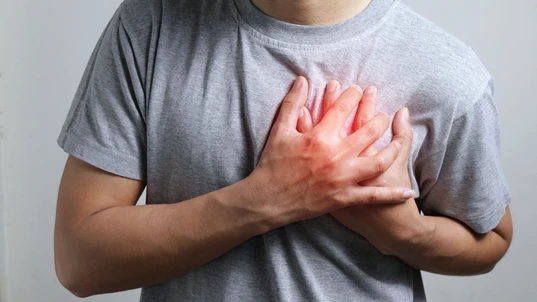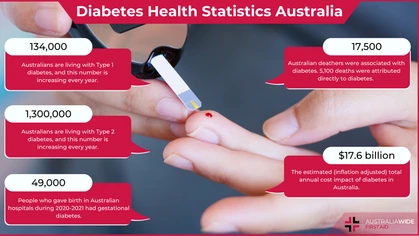The Leading Cause of Death in Men

Disease

Coronary heart disease is the leading cause of death in Australian men.
Heart disease is the leading cause of death for men in Australia, with coronary heart diseases at the top of the list. It is vital to identify early signs. Seeking medical advice early can help lower the risk of death.
Plaque build up along the walls of the arteries, restricting blood flow.
What is Coronary Heart Disease?
The term ‘heart disease’ is used to describe a range of conditions that affect the heart:- Heart valve disease
- Heart muscle disease
- Congenital defects (problems you are born with)
- Arrhythmias
- Blood vessel disease (e.g. coronary artery disease)
- Blood clots (as the plaque detaches from the artery walls and travels around your body, including to your brain)
- Ischaemic heart disease (lack of blood supplied to the heart itself)
- Arrhythmia
- Heart attack
Signs and Symptoms of Coronary Heart Disease
Coronary heart disease develops slowly, so you may not know you are developing issues until it is too late. Often people discover they have coronary heart disease after they experience chest pain or a heart attack. Symptoms of a heart attack vary person to person, and men to women, but in general men can experience:- Chest pain
- Neck or left arm pain
- Nausea
- Shortness of breath
- Feeling cold and sweaty
- Fatigue
Risk Factors for Coronary Heart Disease
As the leading cause of death in men in Australia, we should all be aware of the risk factors and how to protect the men in our lives from this disease. Like many chronic conditions, lifestyle has a significant impact on the risk of developing coronary heart disease. The list of lifestyle-related risks includes:- High cholesterol
- Alcohol consumption
- Smoking
- High blood pressure
- Lack of exercise
- Unhealthy weight
- Stress
- Family history of coronary heart disease
- Diabetes
- Ethnicity
- Older age
How to Reduce Your Risk
Some of the risk factors associated with coronary heart disease are within your control, and some are not. You cannot, of course, change your ethnicity or age or family history. The risk factors that are in your control are those related to lifestyle. Improving these risk factors will not only lower your risk of coronary heart disease, but also many other significant health issues. This can include Type 2 diabetes – you can lower the risk of both in tandem, which further lowers the risk of coronary heart disease developing as you age. The most significant ways you can reduce your risk of coronary heart disease are:- Move your body every day – find a form of exercise that you generally enjoy and incorporate it into your everyday routine. Being generally fit means your heart has an easier job pumping blood around your body.
- Eat more fruits and vegetables, and less foods with high fat, sugar, and salt content. This can help keep cholesterol in check and reduce the risk of developing Type 2 diabetes.
- Quit smoking (cigarettes and e-cigarettes). Smoking damages the walls of your arteries and reduces oxygen in your blood – both can impact the severity of symptoms you can experience with coronary heart disease.
- Help your blood pressure stay at a healthy level by reducing stress. What this looks like in your life is very individual.
When to Seek Medical Advice
Coronary heart disease can be asymptomatic, so it is important to discuss with your doctor if you have a family history of it. As a chronic condition, it has no cure, but early detection can be the difference between life and death. If you are over the age of 45, you should book in a Heart Health Check with your doctor, which includes monitoring your risk for developing coronary heart disease. For those of Aboriginal and/or Torres Strait Islander descent, you can arrange this check from the age of 30. If you experience chest pain or suspect a heart attack, seek immediate medical attention. Keeping your First Aid and CPR skills up to date can mean the difference between life and death for the men in your lives, especially if they are experiencing a heart attack.
Originally published at
https://www.australiawidefirstaid.com.au/resources/leading-cause-of-death-men
as part of the Australia Wide First Aid Articles Library









